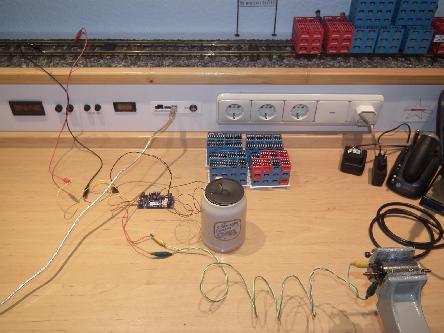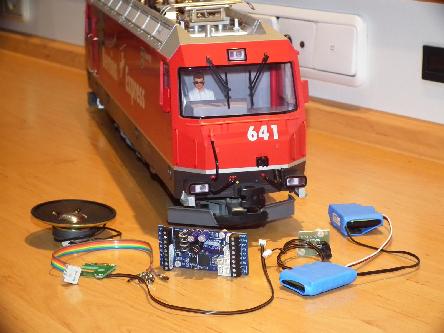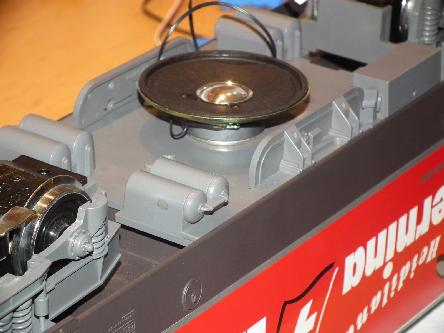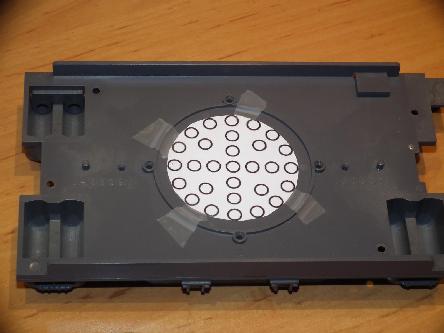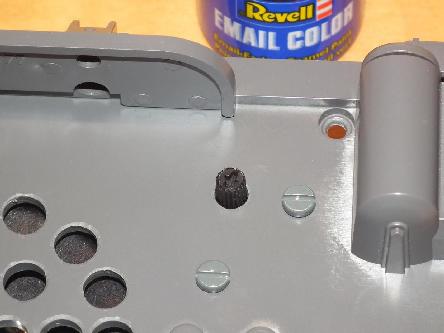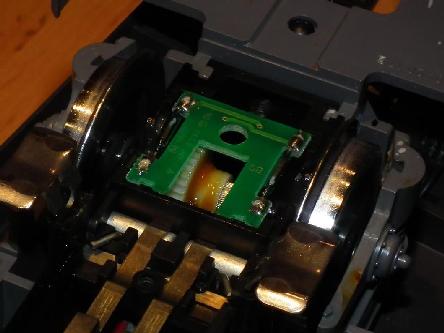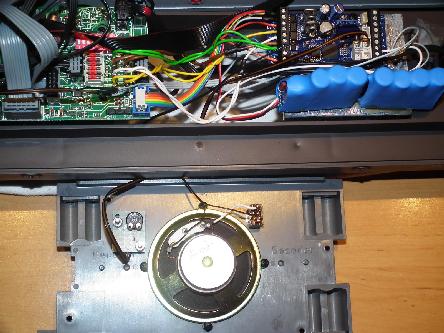Katzhagen - Archive - March 2016
Rustling up sound...
... for the RhB Ge4/4 641 "Maienfeld" was the idea when I came across an inexpensive offer for a Massoth XLS. Since this loco features a related interface this looked like a project being easily and fastly to accomplish.
But you know what it's like with these "Just-10-Minutes-Drives" most times... but see and read on...
Done - I thought. But ... no.
Basically the decoder did work after its installation - but neither the engine's shutdown sounds nor the decoder's shutdown were triggered when setting the tracks' voltage to 0V.
The sound died with a more or less ugly croaking. Neither attempts to correct this by changing the related CV values nor support by Massoth led to a solution. The decoder was sent in to Massoth.
But the manufacturer was unable to find a fault at all in the first place - until they connected it to a loco featuring the 6-pin interface, when it showed the same faulty behaviour. They identified the decoder to not recognize the zero voltage correctly and modified the firmware accordingly.
After having resumed possession of the decoder I got the shock of my life when reinstalling it: It was worse than before. Though the shutdown sound was triggered now, an endless loop of the shutdown and startup sounds was played alternatingly in succession - even at 6V when standing still. Obviously the firmware's modification had not been tested.
So the initial firmware was reloaed...
Now to get it for real...
After several hours of measurements using two multimeters, an oscilloscope and a palmful of probe cables it became clear that the loco's internal board and the decoder simply don't fit together electrically. The loco's internal board pulls up the voltage on the decoder's side as soon as the track voltage drops to zero. This way recognizing 0V without a differential meassuring method (the XLS is not capable of) is impossible - and changing the firmware given these circumstances is nothing to write home about.
The solution
to the problem was to achieve quite easily by implementing a galvanic separation of both of the boards. The loco's internal board is fed power from the tracks via a bridge-rectifier (f.i. B80C1500) and the lighting functions are realized using optocouplers (f.i. CNY17-2). Now just three pins of the interface are in use now:
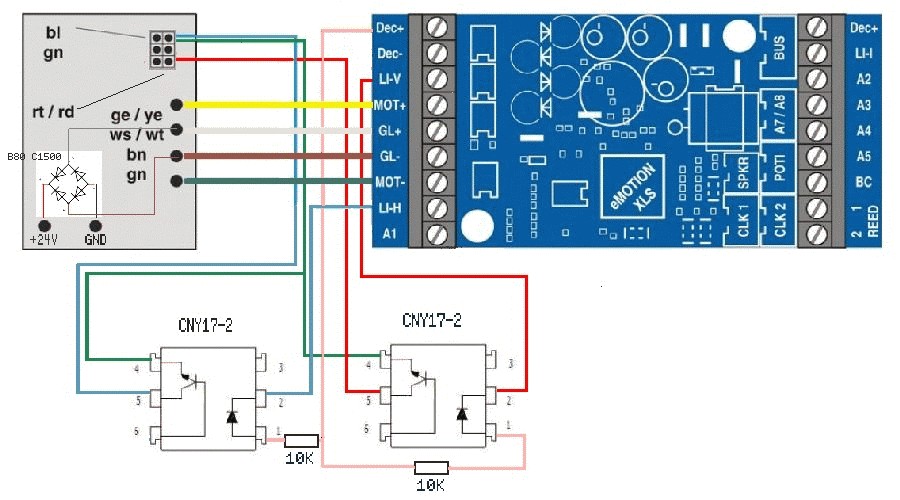
New wiring
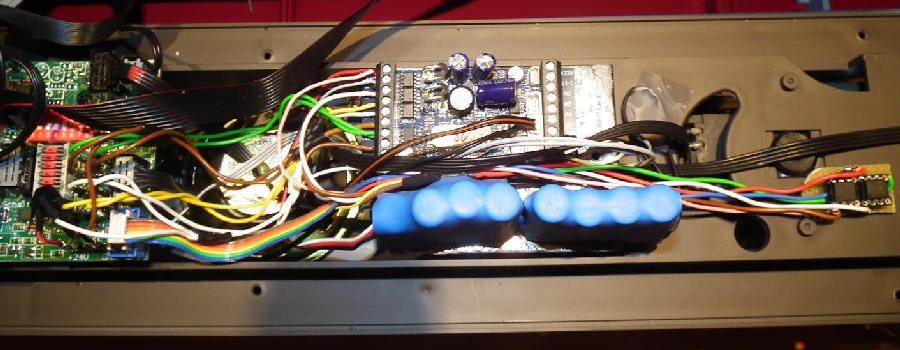
The little board with the optocouplers on the right, the black bridge-rectifier near the DIP-switches on the left.
At times I'm asking myself why customers need to dive into reverse engineering in order to put a manufacturer's products to work.
February 2016 | Archive "Current Affairs" | April 2016

